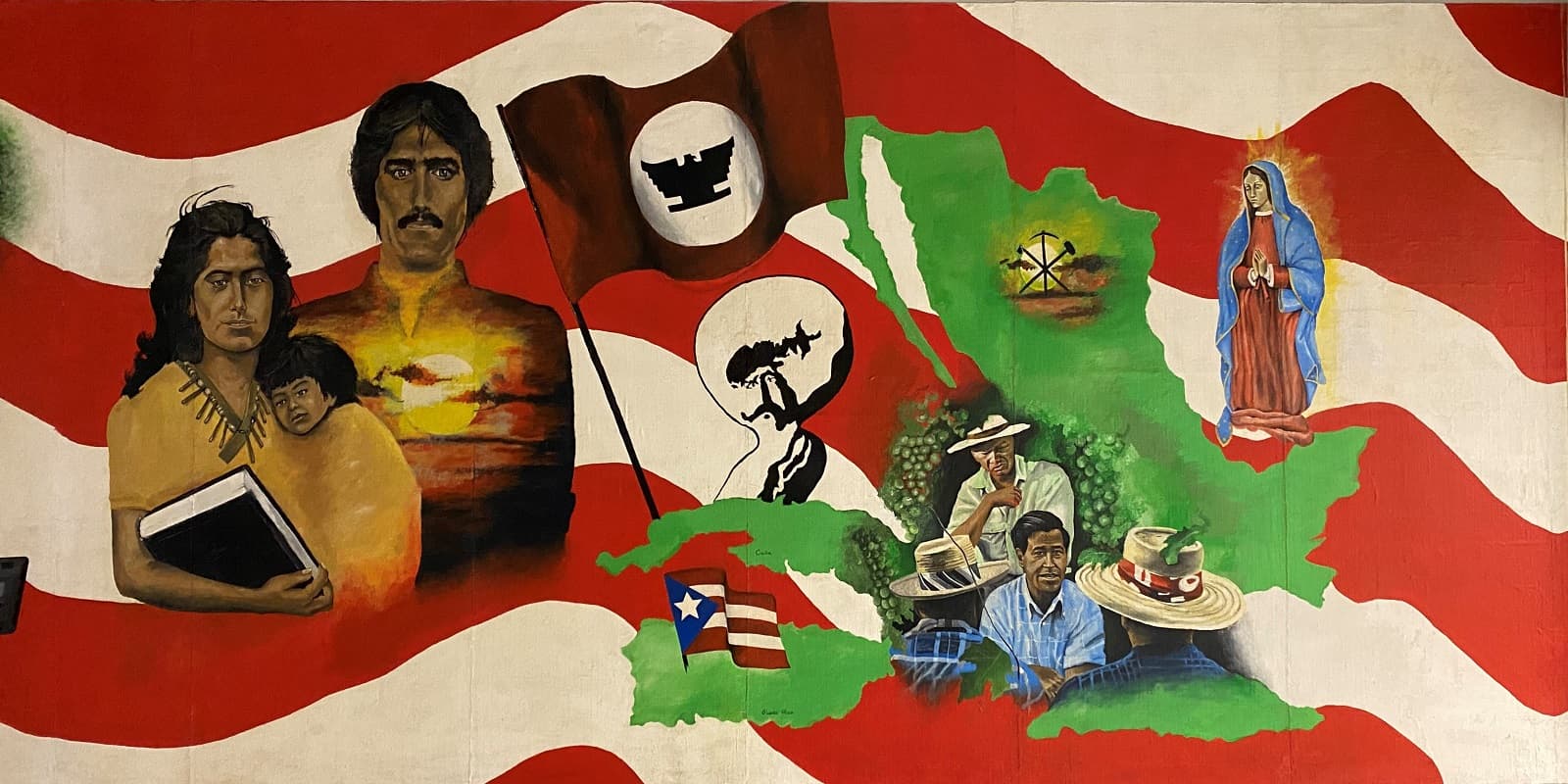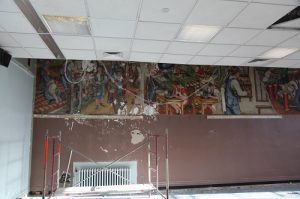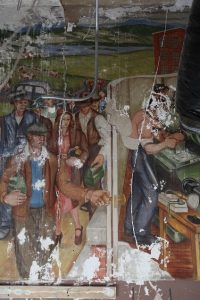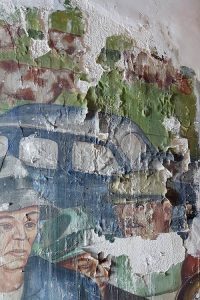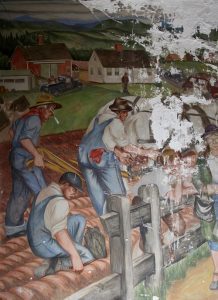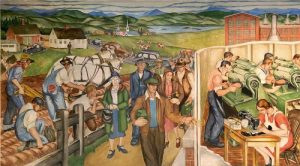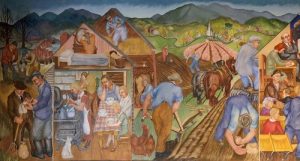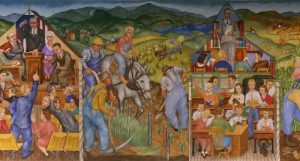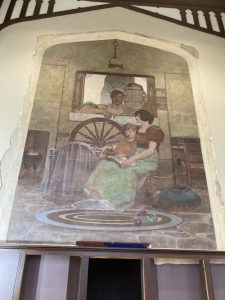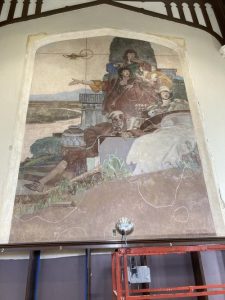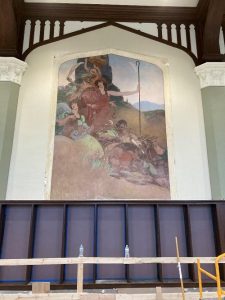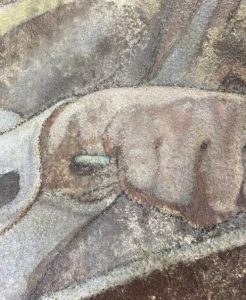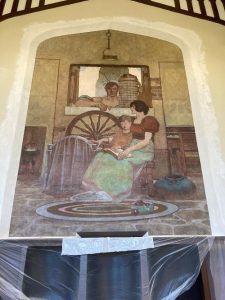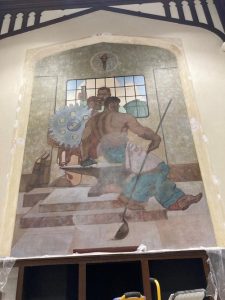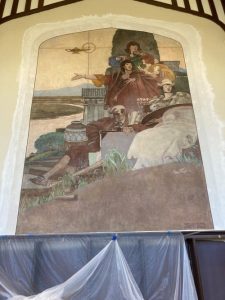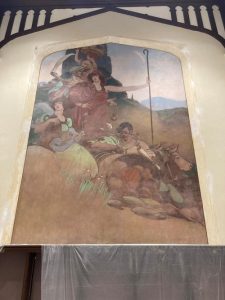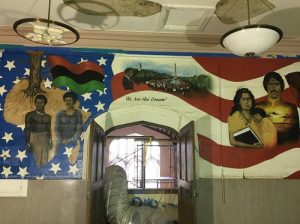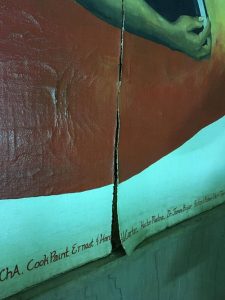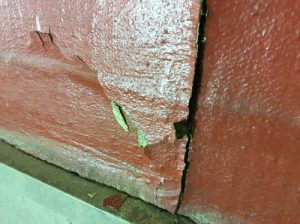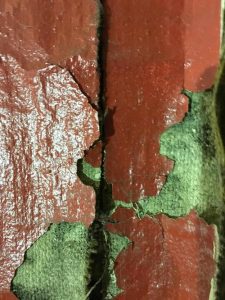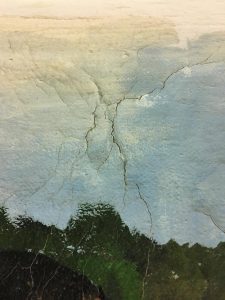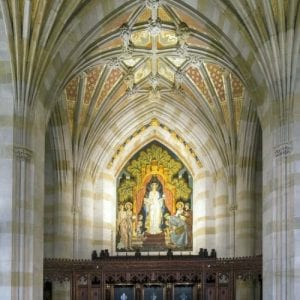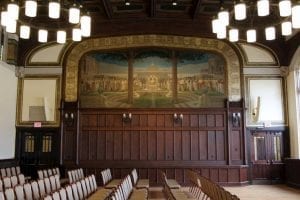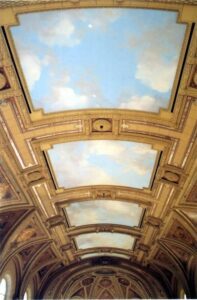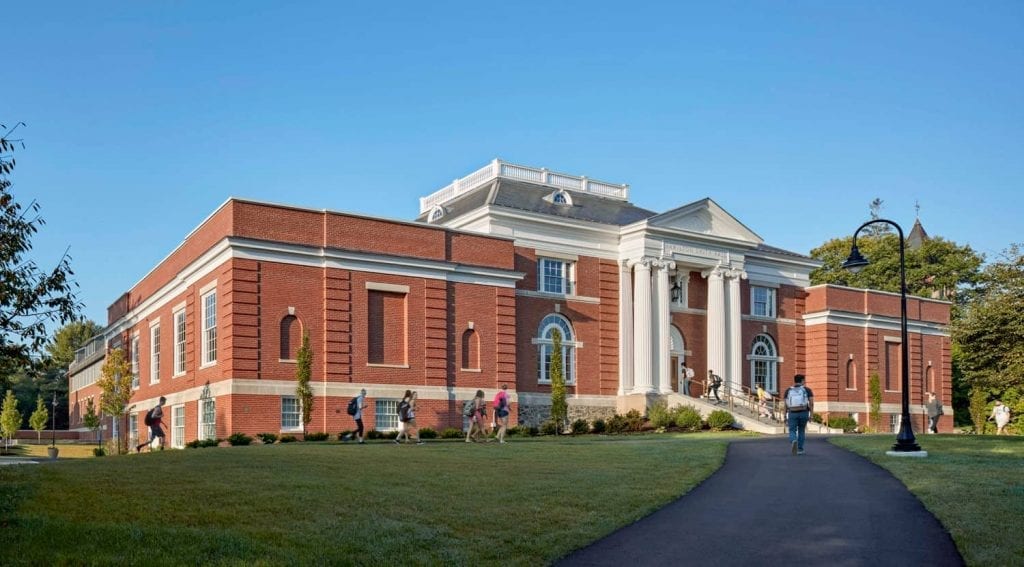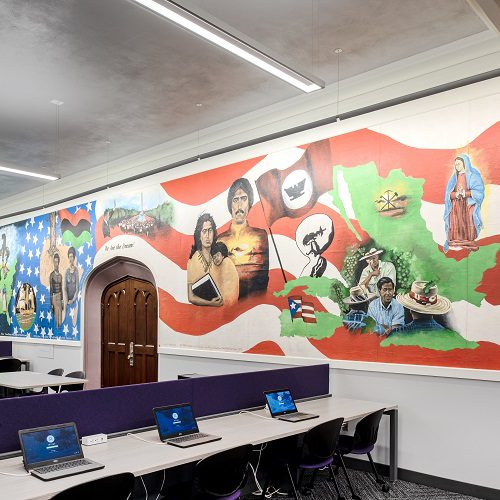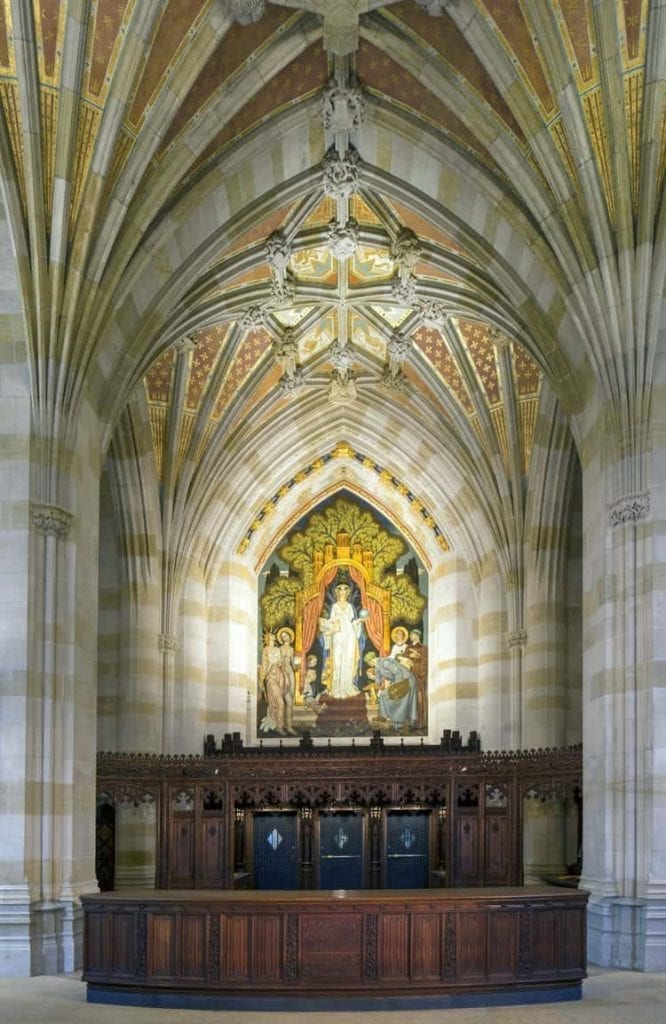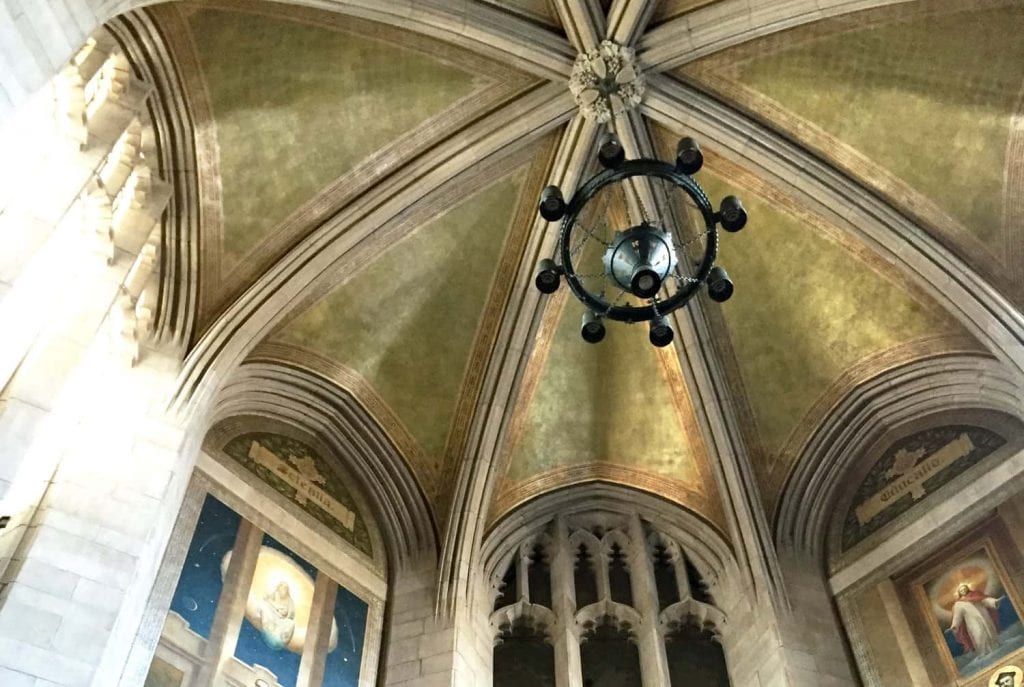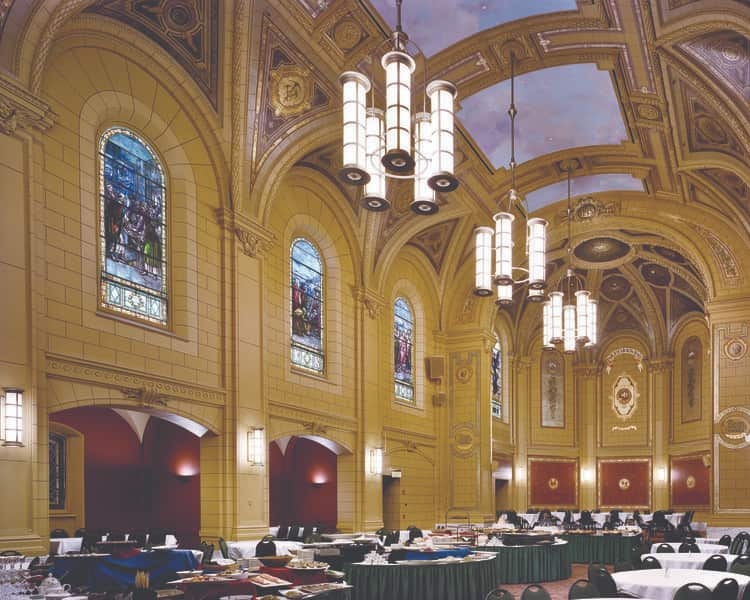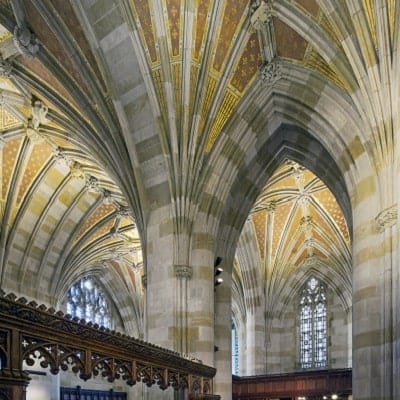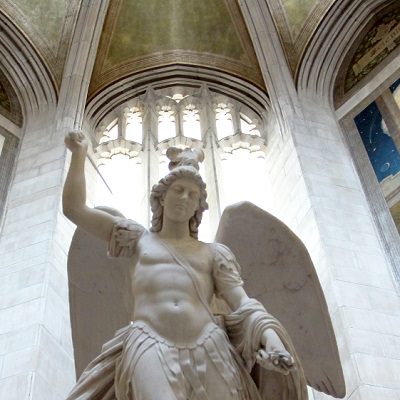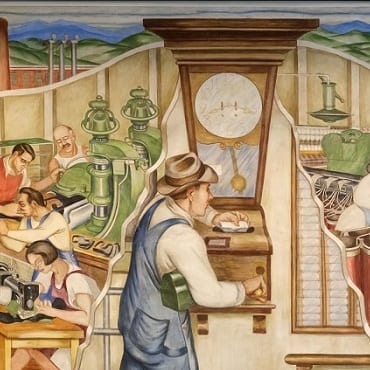Murals are powerful works of art. Their immense and permanent nature allows them to move hearts and minds to reflect on a particular scene or to absorb a certain message. This ability holds an important place among college campus murals, since colleges and universities have the special opportunity to influence young adults and inspire them to accomplish great things.
Two murals at Hamilton Smith Hall of the University of New Hampshire prove excellent examples of a mural’s power and ability. Painted in 1938, one mural was intended to depict “Farming in New Hampshire,” the other “Industry in New Hampshire,” both contributing to the aim of the project, namely to bring attention to shared American values and progress. These murals were part of the bigger aim of the Federal Arts Project, an organization started during the great depression to fund and advance visual arts in the United States for the betterment of American society. John Canning & Co. had the opportunity to restore these two murals, read more about the process here.
(Above) Before images of Hamilton Smith Hall, University of New Hampshire murals. (Below) After images of some sections of the murals.
After undergoing significant damage from a fire in 2018, John Canning & Co. had the opportunity to restore murals at Kansas State University’s Hale Library. The magnificent mural titled “We Are the Dream” now hangs in the library’s great room for the wonder of all its beholders.
(Above) Before images of the murals depicting the four areas of study. (Below) After images of the murals depicting the four areas of study.
Along with the “We Are the Dream” mural, the murals depicting four areas of study- “Science & Industry”, “Agriculture”, “Arts”, and “Home” were also restored. The importance of hiring an experienced Fine Arts Conservator for a project as big as mural restoration cannot be emphasized enough. Often, owners will bring in an artist to try and conserve or restore a painting, and this will almost always end in failure. The job of the artist is to create something new, not to revive something historic. Consequently, an artist will often paint something new on top of a mural rather than preserving the integrity of what is already there. The most experienced conservation practitioners are members of the American Institute for Conservation (AIC). These individuals adhere to the Association’s Code of Ethics and practice a “do no harm” philosophy.
(Above) Before images of the “We Are The Dream” mural. (Below) After images of the “We Are The Dream” mural.
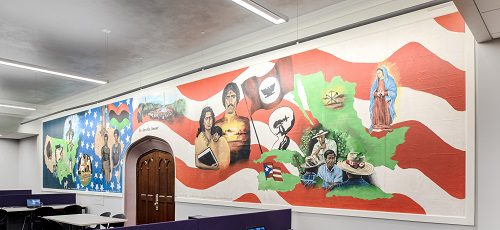
Process
Like all projects, college campus mural restoration will vary from project to project depending on particular circumstances. The general process, however, can be reduced to three steps.
1) Conditions Assessment
A conditions assessment of a mural is aimed at understanding the current conditions of the mural in order to determine appropriate steps forward. It is composed of two parts-historic research and evaluation of the mural’s current conditions. We believe that the success of any restoration project should completely depend upon understanding the history of the element at hand. Archival research will help determine certain things like what the original mural looked like and what paint and materials were originally used. The current conditions of the mural are then evaluated through visual inspection and scientific analysis where samples are examined in a laboratory. Existing conditions such as damage, flaking, paint thinning, etc. are documented and used to guide the restoration treatment.
2) Treatment
Depending upon information obtained in step one, a series of procedures may be used, some of which include:
-
-
- Cleaning: Cleaning the surface with water or a gentle solution of any incompatible varnishes, overpaint, dirt, dust, or soot that may have settled or been used over the years.
- Stabilization and Reattachment of Flaking Paint: Flaking paint does not always have to be removed and discarded. Sometimes it can be stabilized and reattached through injecting adhesives and using heat to soften and reattach the paint. This process is also referred to as paint consolidation.
- Paint Replication: A mural is oftentimes so worn and tired that large sections of the painting are missing and must be replicated. This is done with assistance from historic photos and sketches or predictions obtained from observing patterns in the painting.
- Infill Paint: Often divots are made as a result of chipping or wearing paint. These should be infilled with putty and painted over to achieve an even surface.
- Plaster Stabilization: Large cracks and delaminating plaster can be restored using a plaster infill technique. Small holes are made all over the mural and, using instruments such as syringes, an adhesive is pumped into them in order to reattach the plaster of the mural to the wall.
-
3) Protective Coating Application
Once the mural has been appropriately treated, a low sheen varnish layer is applied to the final product in order to protect from future dust accumulation and any other wearing factors.
Cost
The costs associated with restoring a mural will depend upon a number of factors specific to each individual project. Some of the most important considerations include:
-
- The size, complexity, and scope of the project
- The specific solutions and pigments required to complete the work
- Accessibility (for example, whether scaffolding will be required to conduct the work)
- Whether the underlying structure must be repaired, stabilized, or restored
- For projects located in public spaces, whether the work will take place during business hours
At the Sterling Memorial Library, Yale University, John Canning & Co. conserved and restored a mural by Eugene Savage. It is found against the back wall of the nave surrounded by allegorical symbols representing academic schools. Other examples of murals we restored include Gasson Hall at Boston College and the Culinary Institute of America.
(Left to Right) Murals from Sterling Memorial Library, Gasson Hall, and the Culinary Institute of America.
In addition to restoration, we are also asked to remove murals from their existing location and either relocate them or store them for future consideration. This process can be very simple, depending on the mural and adhesive type, such as a heavy cotton canvas mural with a wheat paste adhesive. However, a thin linen canvas adheres to a plaster wall with white-lead adhesive. This adhesive is difficult to remove without possible damage to the artwork, not to mention the safety concerns. Therefore, thorough examination and planning are required for the success of such a project. The goodness and beauty of both the careful artwork and the intended message of a college campus mural provide the beholder with a personal and uplifting experience. Such murals are therefore always worthy of being conserved and restored in order to keep this experience available for ages to come. If you have any questions or a project you would like to discuss, please contact us.

